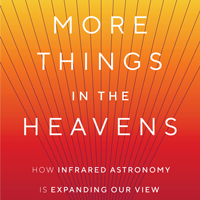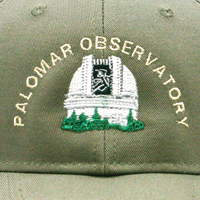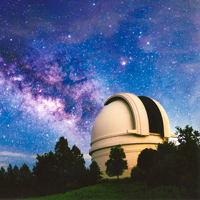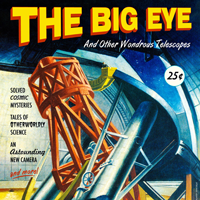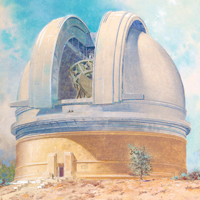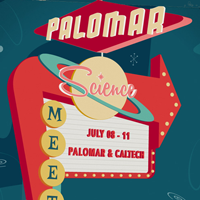In this issue

No. 9
Summer 2021
Hale Primary Mirror Recoating in Mid-November 2021
By Andy Boden (Caltech)
Video about the Hale's 200-inch primary mirror and its maintenance. Duration: 3:06 minutes. (Palomar/Caltech)
The Hale Telescope has roughly 530 tons of moving mass in the telescope structure and 1000 tons of moving mass in the dome above it. I am fond of remarking that all of these impressive structures, mechanical engineering, and control is aimed at getting about 5 g of aluminum to the right place and time to collect and direct the right incident starlight into our instruments. To make sure the collection process is efficient, our aluminum mirror coatings must remain relatively clean and uniform—something that has been challenging for us under pandemic conditions.
Typically we recoat the up-facing Hale primary once every two to three years, and with routine maintenance (e.g. periodic CO2 dusting and water—yes water—washing) that is sufficient to maintain reasonable mirror “reflectivity” throughout our wavelength range of interest (call it 300 nm – 2.5 μm). But under pandemic conditions we were forced to forgo much of this routine mirror maintenance program, and the primary reflectivity has significantly degraded since its last recoating in Fall 2018. Present reflectivities near the blue end of the spectrum (~ 400 nm) have degraded below 60%, and the Hale’s productivity is adversely impacted.
Annotated (via subtitles) video of the aluminum recoating process for the 200-inch mirror. Duration: 2:20 minutes. (Palomar/Caltech)
Because recoating is an involved, collaborative process, we did consciously assess and forego primary recoating last fall in the interests of staff safety (i.e. before Covid-19 vaccines were readily available). But the need to improve mirror reflectivity has become pressing, and once again our excellent observatory staff have risen to the challenge of reimagining recoating processes to keep everyone safe. Therefore I am happy to report that we will be moving forward with the scheduled Hale primary recoating in mid November.
I seem to say this a lot: the heart of our Palomar Observatory community is our observatory staff, and their dedication to reimagining our operations processes during these challenging times is something that we all appreciate, and I know I will never forget. On behalf of all of us in the Palomar community, I’ll take this opportunity to thank them once again for their dedication in maintaining sky access for us all.
Update on the Next Generation Palomar Spectrograph (NGPS)
By Lin Yan (Caltech)
The development of the Next Generation Palomar Spectrograph (NGPS) has recently reached a major milestone. The project carried out a thorough programmatic review on August 26, 2021, which discussed the project systems engineering, project staffing, budget and schedule. The review confirmed that NGPS has a project team, budget, and schedule in place to see the instrument through to its completion in 2023. The NGPS instrument commissioning is proposed to have two phases—Phase A for the red side (R & I) is proposed for early 2023, and Phase B for the blue side (U & g) proposed for fall of 2023. COO Director Jonas Zmuidzinas will decide on a preliminary NGPS commissioning schedule in consultation with various Hale Telescope stakeholders.
Since mid-2020, the Caltech Optical Observatories (COO), the Nanjing Institute of Astronomical Optics & Technology (NIAOT) and several engineers from Jet Propulsion lab (JPL) are working together to construct a general purpose spectrograph to replace DouBle SPectrograph (DBSP) which has been the most scheduled instrument on the Palomar 200-inch telescope since it was commissioned in the early 1980s. NGPS will have four channels covering 320 nm to 1030 nm with a spectral resolution of 4600 in the center of each band. Its optical throughput is expected to be at least 3 times more sensitive than that of the current DBSP at 600 nm. The description of the NGPS design was first reported in Issue 7 of the Observer Newsletter.
Despite the pandemic, NGPS development has achieved several milestones. In June 2020, the project named Robert Bertz to serve as the project manager. Weekly telecons (twice a week) are scheduled between COO and NIAOT. Most of the technical requirements were finalized by the end of June 2021. NIAOT is primarily responsible for building the dichroic tree, the four-channel (UGRI) spectrograph, and the acquisition and guider sub-system. The engineers at NIAOT have recently completed the two separate optical designs for the U channel, and the G,R,I channels. NIAOT is also participating in some mechanical design and manufacturing work for the instrument structure. COO is leading the effort on the slicer, detectors, calibration, instrument control software, and electronics rack. Various fabrication activities have begun. As of August 2021, the project has a detailed, resource-leveled Master Schedule Project plan containing over 800 lines. Ten sub-systems have their own leads, budgets and schedules. Each sub-system has to pass a series of reviews before the components are released for manufacturing. In the August project programmatic review, the detailed plans for assembly, integration, and verification at both NIAOT and COO have been presented and discussed.
NGPS will employ every available tool to maximize sensitivity and operational efficiency. To achieve the latter, NGPS will have a dedicated software for streamline acquisition and set-up. Along with the instrument commission, the project will provide an Exposure Time Calculator (ETC) for users to make the most effective observing plans, taking into account sky background, seeing condition, and target positions. NGPS data will be reduced on the fly by a quick-look software and the results should be useful to optimize the instrument configuration to achieve the best signal-to-noise ratios. A prototype of this quick-look software for NGPS data is already in place.
A New Pipeline for Reducing DBSP Data from P200
By Milan Roberson (Caltech)
DBSP_DRP is a user-contributed Python package that provides fully automated data reduction of data taken by the Double Spectrograph (DBSP) at the 200-inch Hale Telescope at Palomar Observatory. This package is an open source code, available to the P200 user community for download at https://github.com/finagle29/DBSP_DRP. This software is offered on an as-is basis and is not the product of or supported by COO/Palomar.
The underlying data reduction functionality of DBSP_DRP is provided by PypeIt (Prochaska et al., 2020). The PypeIt codes are used to extract 1D spectra, perform flux calibration and correction for atmospheric absorption, and coadd spectra together. The new feature in DBSP_DRP is in orchestrating the complex data reduction process by making smart decisions so that no user input is required. DBSP_DRP provides an optional table-like GUI for verifying and updating key FITS header cards, however this verification step is recommended.
Though the primary function of DBSP_DRP is to automatically reduce an entire night of data without user input, it has the flexibility for astronomers to fine-tune the data reduction with GUIs for manually identifying the faintest objects, as well as exposing the full set of PypeIt parameters to be tweaked for users with particular science needs. DBSP_DRP also handles some of the occasional quirks specific to DBSP, such as swapping FITS header cards, adding an extra null byte to FITS files making them not conform to the FITS specification, and not writing the coordinates of the observation to file.
Additionally, DBSP_DRP contains a quicklook script for making real-time decisions during an observing run, and can open a GUI displaying a minimally reduced exposure in under 15 seconds. Docker containers are available for ease of deploying DBSP_DRP in its quicklook configuration (without some large atmospheric model files) or in its full configuration.
If you use this package for your research, please cite Roberson et al. 2021, ArXiv:2107, 12339 and detailed documentation and instructions can be found at https://github.com/finagle29/DBSP_DRP.
Updated Observing Forms
By Andy Boden (Caltech)
Most of you are aware we have entered the Semester 2022A Time Allocation cycle; here at Caltech proposals are due on 01 October 2021. We wanted to advise that as part of modernizing our processes we are continuing to rework our Hale Telescope cover sheet forms. Relevant across all our constituencies, in 22A we have reworked both the Hale cover sheet and particularly the date-specific supplement form.
These forms remain designed exclusively for desktop use but have a new look, expanded context (e.g. “balloon” help for most fields—available on mouse hover), and required field checks. The date-specific form in particular has been revised to better accommodate expected use cases (e.g. date-specific events now accepted in JD and UT time bases, and we expect to support additional date formats in future semesters).
We are always interested in hearing feedback from you on everything Palomar, but here I’ll specifically invite feedback on this form evolution—whether these changes are a help in the observation request process, and any suggestions you might have to make the forms even better. Please share your thoughts with us through our feedback portal.
Questions? We've answered many common visiting, media, and academic questions in our public FAQ page.
Please share your feedback on this page at the
COO Feedback portal.
Palomar Observer 9
Last updated: 15 September 2021 LY/AFB/ACM
